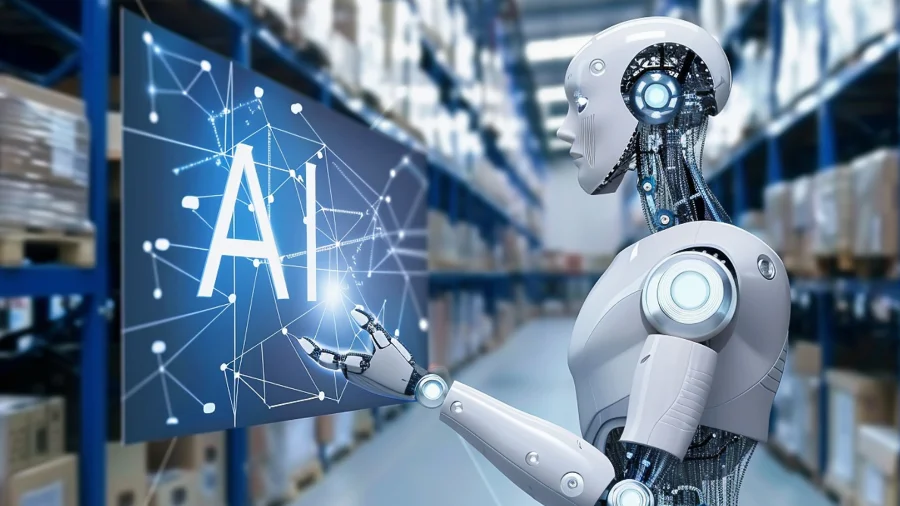Introduction
Artificial Intelligence (AI) has rapidly evolved from a futuristic concept into an everyday reality. From natural language processing to automated image generation, AI is shaping industries worldwide. With this transformation comes a crucial question: how do we distinguish between human-created content and machine-generated output? The answer lies in AI detector and KI detector.
“AI detector” is the English term, while “KI detector” refers to the same concept—tools designed to identify whether a piece of content originates from humans or artificial intelligence. These detectors play a vital role in maintaining transparency, academic honesty, cybersecurity, and trust in the digital world.
What is an AI Detector / KI Detector?
An AI detector or KI detector is a software tool that analyzes text, images, audio, or video to determine whether it was created by humans or artificial intelligence.
In practice, these detectors use advanced algorithms and machine learning techniques to scan content for:
-
Statistical patterns that differ between human and machine writing.
-
Stylistic markers such as vocabulary, syntax, and sentence flow.
-
Metadata clues in images or audio.
Simply put, an AI detector acts like a content authenticity checker. Whether you call it an “AI detector” in English or a “KI detector” in German-speaking regions, the purpose is the same: separating authentic human expression from algorithm-driven production.
Why Do We Need AI and KI Detectors?
1. Academic Integrity
Students can now use AI tools to write essays, solve assignments, or generate research papers. Detectors help educators ensure fair evaluation.
2. Journalism and Media
With misinformation and fake news on the rise, detectors assist journalists in confirming the authenticity of sources and stories.
3. Business and Marketing
Companies verify the originality of customer reviews, marketing content, and product descriptions to maintain consumer trust.
4. Cybersecurity
AI-driven phishing attacks, fake profiles, and deepfakes pose threats. Detection tools strengthen defenses against these risks.
5. Ethical Responsibility
Detectors help enforce transparency by ensuring users know whether they are engaging with a human or an AI system.
How Do AI and KI Detectors Work?
1. Perplexity Measurement
AI detectors often calculate perplexity, which measures how predictable a piece of text is for a machine learning model. AI-generated text usually has lower perplexity than human writing.
2. Burstiness Analysis
Human writers use varied sentence lengths and structures. AI tools often produce more uniform sentences. Burstiness analysis captures this difference.
3. Linguistic Fingerprinting
Detectors analyze grammar, style, tone, and word choice. AI tends to favor certain repetitive phrases or overly balanced structures.
4. Watermarking and Hidden Tags
Some AI systems embed invisible “watermarks” in content. Detectors can scan for these markers to confirm AI origin.
5. Metadata Evaluation
In images, detectors examine pixel patterns, resolution consistency, and metadata to spot AI-generated visuals.
Popular AI and KI Detectors
-
GPTZero – Specializes in identifying AI-written academic and professional texts.
-
Copyleaks AI Content Detector – Used by businesses and publishers for originality checks.
-
Turnitin AI Detector – Widely adopted in schools and universities.
-
Sapling AI Detector – Helps customer service teams analyze automated responses.
-
Writer.com Detector – Aimed at businesses ensuring brand consistency in human-written marketing material.
These detectors serve both English-speaking (AI detector) and German-speaking (KI detector) communities, ensuring global relevance.
Benefits of AI and KI Detectors
1. Academic Fairness
Students are evaluated based on their real effort, not AI assistance.
2. Protecting Journalism
Reporters and editors can prevent accidental publication of AI-generated misinformation.
3. Consumer Trust
Businesses can verify reviews and testimonials to ensure authenticity, boosting brand credibility.
4. Cyber Defense
Phishing scams and AI-generated malicious content can be flagged and neutralized.
5. Ethical AI Use
Detectors create accountability and encourage responsible AI deployment.
Limitations and Challenges
Despite their usefulness, AI and KI detectors face obstacles:
-
Evolving AI Models – As AI grows smarter, generated content looks increasingly human-like, making detection more difficult.
-
False Positives – Sometimes detectors wrongly classify human writing as AI-created.
-
False Negatives – AI content may slip through without being flagged.
-
Language Barriers – Detection accuracy may vary across English, German, or other languages.
-
Over-Reliance – Relying too much on detectors can create new ethical concerns about privacy and freedom of expression.
Applications of AI and KI Detectors
In Education
Universities deploy detectors to review assignments, dissertations, and online exams. This ensures that learning outcomes reflect genuine student work.
In Journalism and Publishing
Media organizations verify articles before publication, filtering out AI-manipulated or fabricated stories.
In Business
Companies validate marketing copy, advertisements, and product listings to ensure originality and maintain brand trust.
In Law and Governance
Legal firms use detectors to analyze contracts and documents, ensuring they were not artificially generated or manipulated.
In Cybersecurity
Detectors identify fraudulent content, AI-driven spam, and deepfake attempts before they spread widely.
The Future of AI and KI Detection
The next generation of AI and KI detectors will become more sophisticated, adapting to advancements in AI technology. Future developments may include:
-
Real-Time Detection – Instantly analyzing emails, messages, or news before publication.
-
Universal AI Watermarking – Establishing a global standard for identifying AI-generated content.
-
Cross-Language Detection – Tools capable of analyzing multilingual content with equal accuracy.
-
Integration with Platforms – Social media and search engines may embed detectors directly into their systems.
As AI adoption accelerates, detectors will be essential guardians of authenticity in the digital landscape.
Ethical Considerations
With detection comes responsibility. Some key ethical issues include:
-
Privacy Protection – Detectors must not misuse personal data while analyzing content.
-
Transparency – Users deserve to know when their work is being scanned by AI detectors.
-
Bias Risks – Algorithms may favor certain writing styles, creating unfair outcomes.
-
Freedom of Expression – Over-regulation could discourage creativity or limit the free exchange of ideas.
Balancing accuracy, privacy, and transparency will be essential for ethical AI detection.
Conclusion
As AI continues to reshape the world, distinguishing between human and machine-generated content becomes increasingly vital. Both AI detectors and KI detectors serve as indispensable tools for maintaining authenticity, credibility, and trust across education, journalism, business, and cybersecurity.



